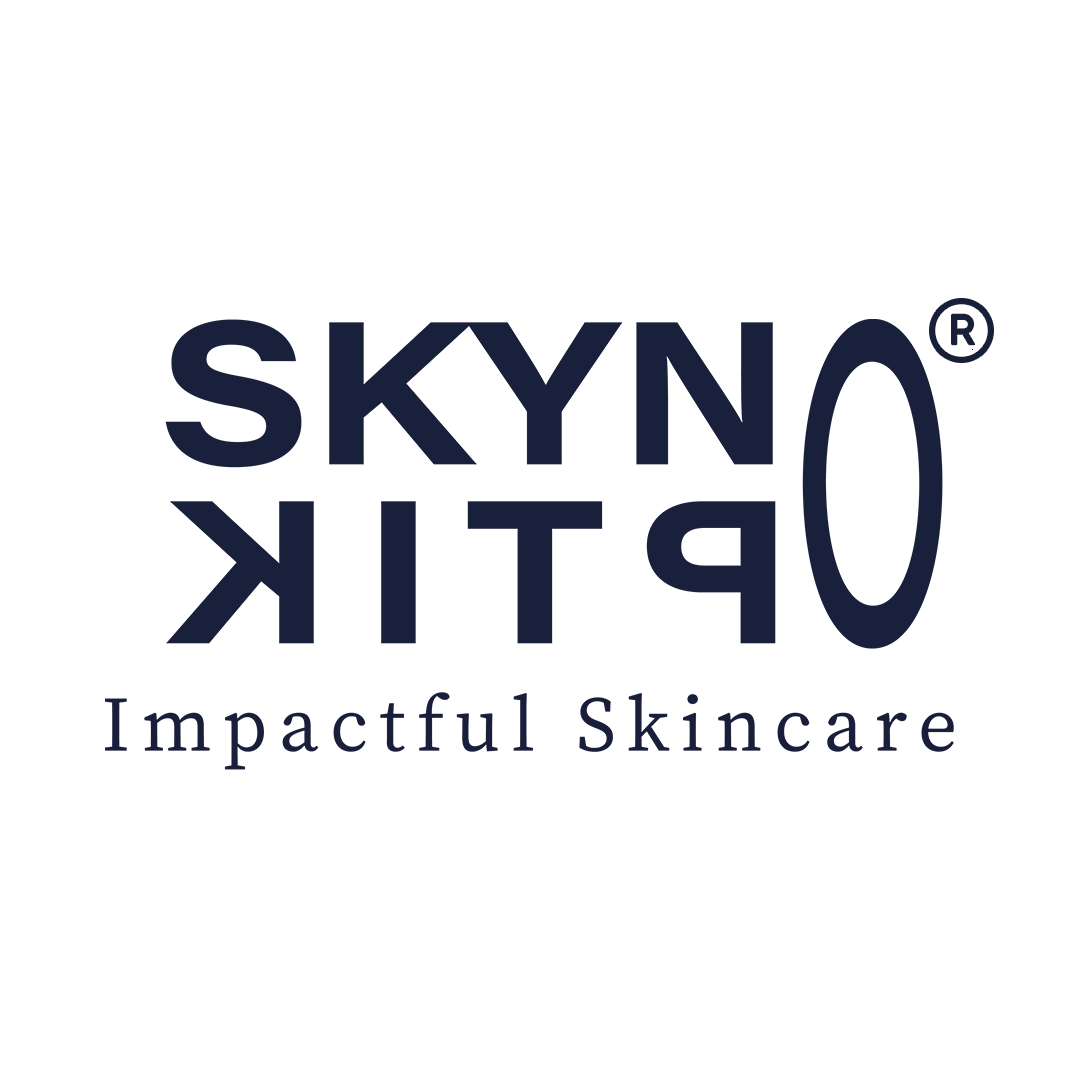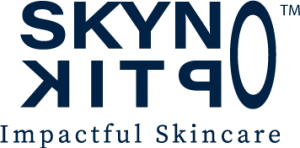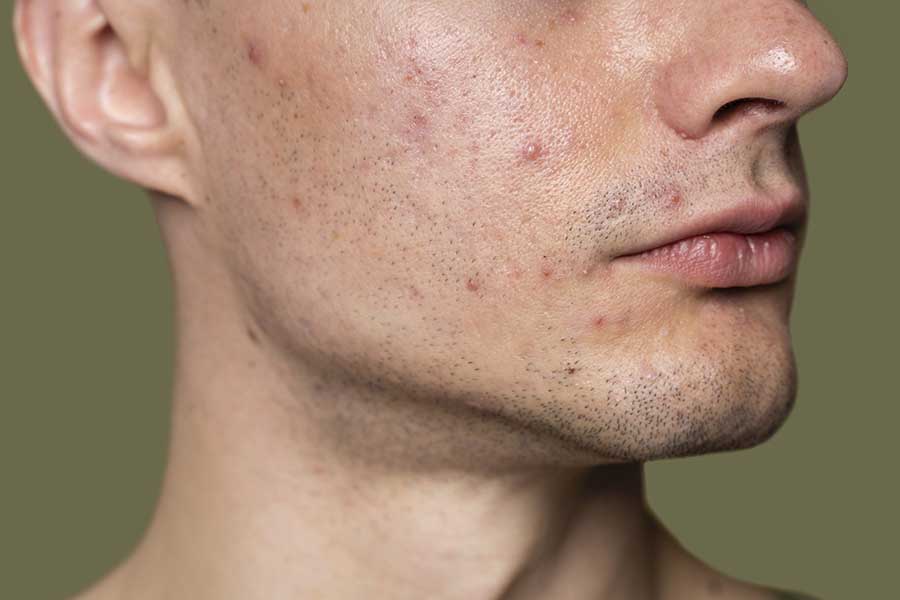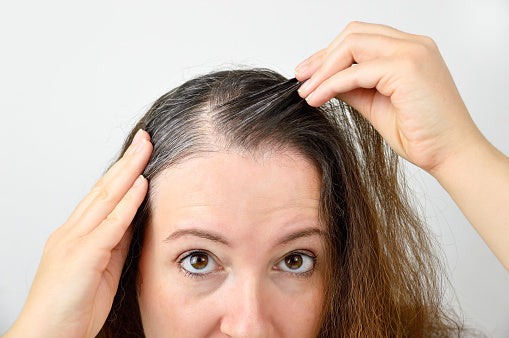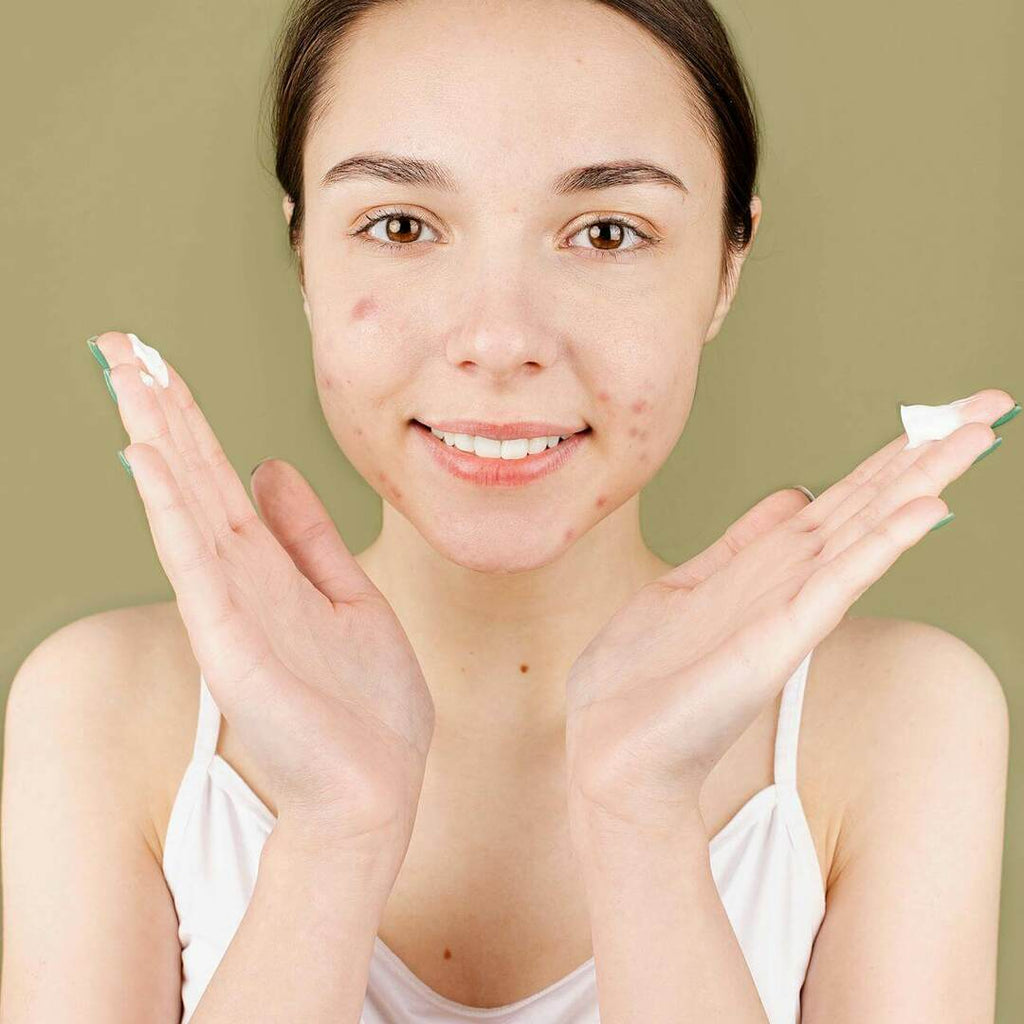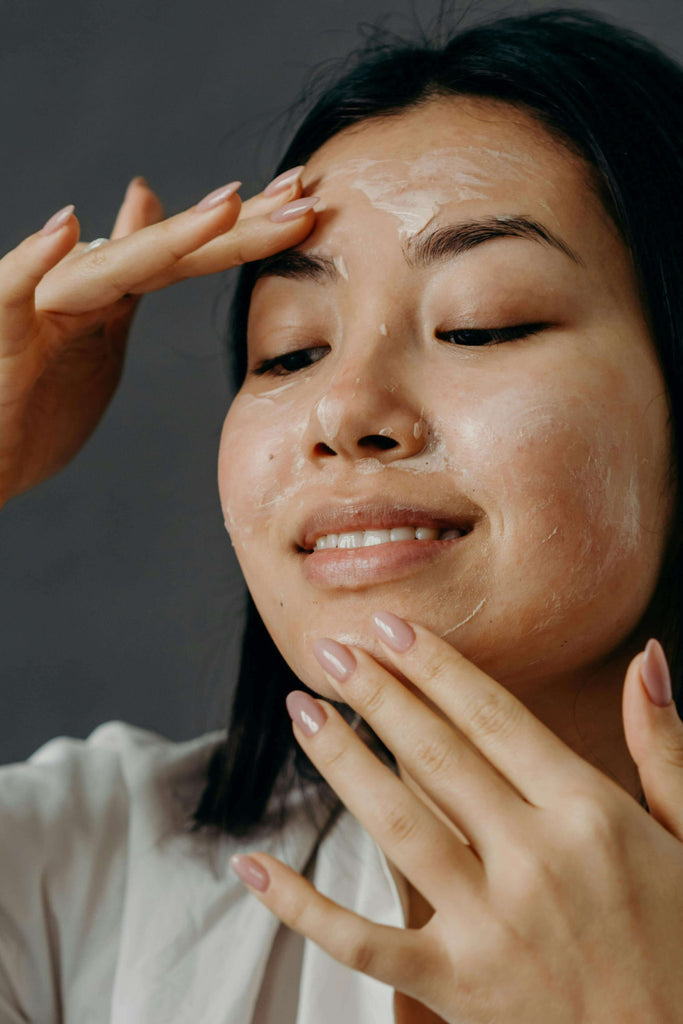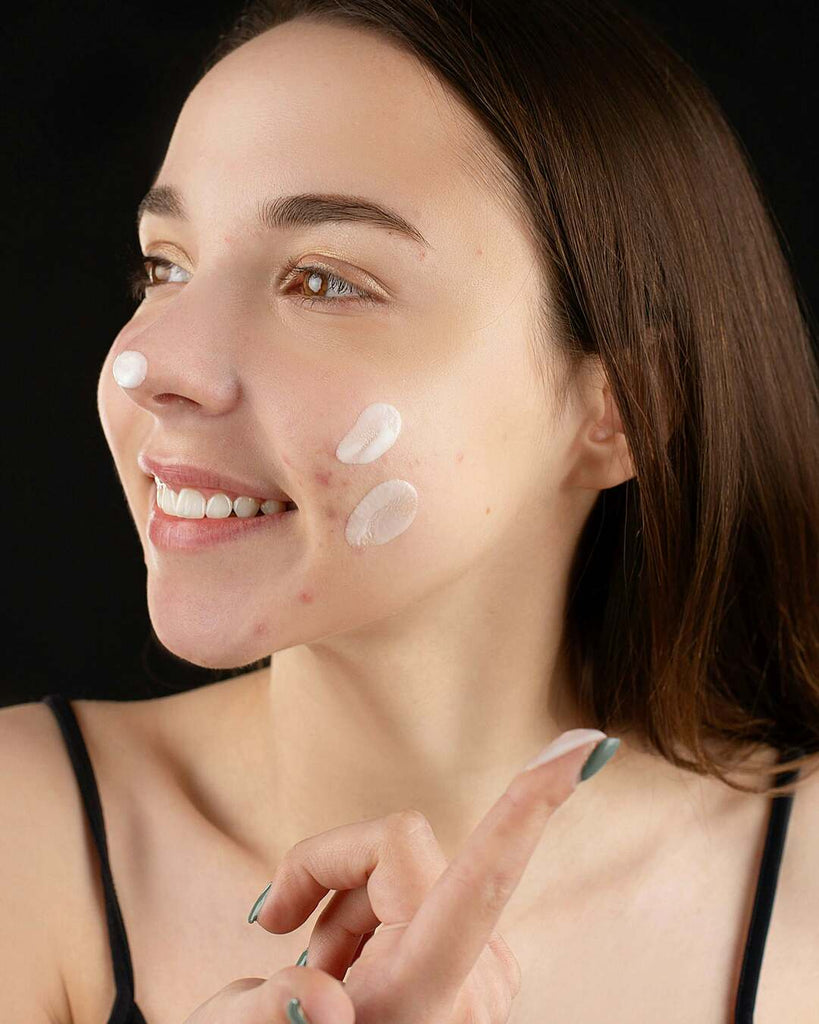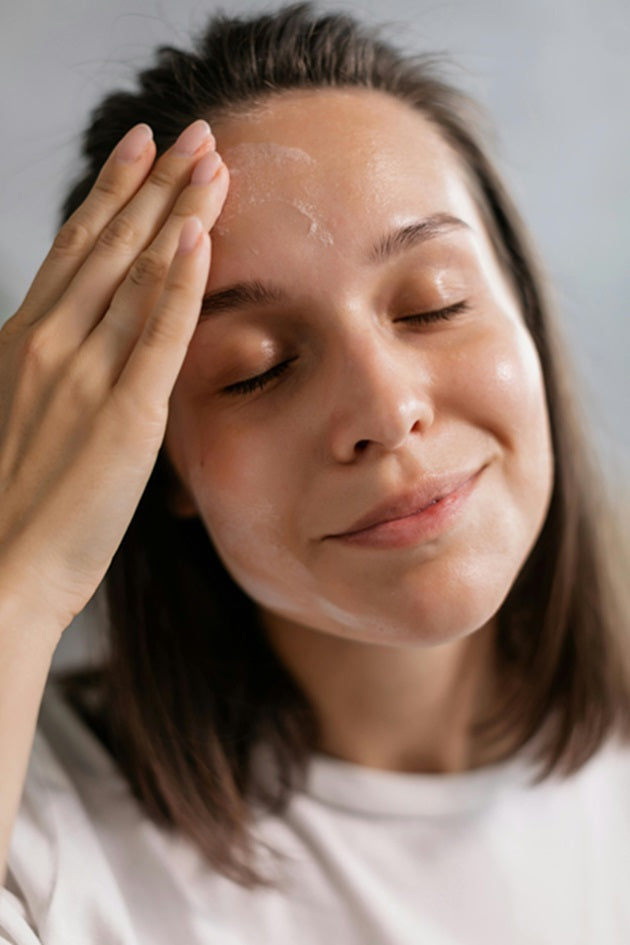What Is Acne?
Acne is a complicated 4-phase cycle that starts beneath the skin‘s surface weeks before a breakout appears. This cyclical process results the continuous formation of new lesions. Here is the breakdown of an acne breakout.In each hair follicle, a sebaceous (oil) gland, attached to the hair, produces oil (sebum), which spills over to protect the skin.
- OIL PRODUCTION – Androgen hormones stimulate oil production in the sebaceous glands.
- DEAD SKIN CELLS – Dead cells shed off skin every 30 days and can get stuck in the pores and trap oil. Oil that doesn‘t mix with cells spills over, causing oily skin.
- BACTERIA – The trapped oil and skin cells create an environment where naturally occurring P. ACNES bacteria thrive.
- INFLAMMATION – As the P. ACNES multiply inside the clogged pore, the body has an immune reaction that causes the red inflammation or cyst-like bump and a pimple forms.
Types of Pimples
- WHITEHEADS – Clogged pores under a thin layer of skin.
- BLACKHEADS – Clogged pores that turn “black” due to oxidation.
- PAPULES – Small red/pink bumps that do not contain fluids or pus.
- PUSTULES – Pus-filled bumps with a red base. Sizes vary depending on inflammation
- NODULES/CYSTS – Large, painful pimples deep in the skin. This is a severe form of acne and a dermatologist should be consulted.
- BACK/BODY ACNE – Ears, chest, back, scalp, shoulders and buttocks have the greatest density of pores, making them susceptible to acne.
Myths & Expert Tips
Acne is common in teens and adults who often turn to social media for answers. Well-intended advice shared online is often misguided. Here is what‘s true and what‘s not
| Myth | Reality |
| Greasy foods can cause acne flare-ups. | There is no scientific proof that sweet or greasy foods cause more blemishes. However, some dairy and carbohydrate-rich foods have been linked to worsening breakouts |
| Popping pimples will make them ago away faster. | Don‘t pick them, treat them! Picking or squeezing a pimple drives bacteria deeper into your skin, creating inflammation, which can lead to scarring. |
| The sun can cure acne. | Exposing skin to the sun can immediately ease acne symptoms but long-term can cause damage, dry out and irritate skin. This causes an imbalance and leads to excess oil production and more acne in the following weeks |
Acne Influencers
- Family History – If one or both parents had acne, you are likely to have it too.
- Hormones – Puberty, pregnancy and menstrual cycles affect oil production levels.
- Diet – Dairy products and carbohydrate-rich foods can trigger acne.
- Medication – Drugs containing corticosteroids, androgens or lithium can worsen acne.
- Stress – Does not cause acne but can worsen it.
- Back/Body Acne – Popping/picking pimples can cause bacteria to spread and scarring.
Skin & Acne Care Tips
- Provide surgical wounds with a healthy healing environment to minimize risks of infection and scarring.
- Don’t overwash your face. 2x a day with a mild cleanser is all you need. Washing more often will dry out skin and can push oil production into overdrive
- Exfoliate regularly, 1-2 days a week to help prevent dead skin to build up. Be gentle as vigorous scrubbing irritates skin.
- Use oil-free, non-comedogenic make-up make-up to maintain clear pores. Also, clean your make-up brushes regularly to avoid spreading bacteria.
- Hydrate your skin to counter the drying effects of treatments with oil-free, non-comedogenic moisturizers.
- Manage your stress. The release of hormones caused by stress can make your body produce more oil. Discover ways to manage your stress Like exercise, yoga or meditation, adequate rest and sleep or breathing exercises.
- Consistency is key. Results will not be seen overnight, they take time.
